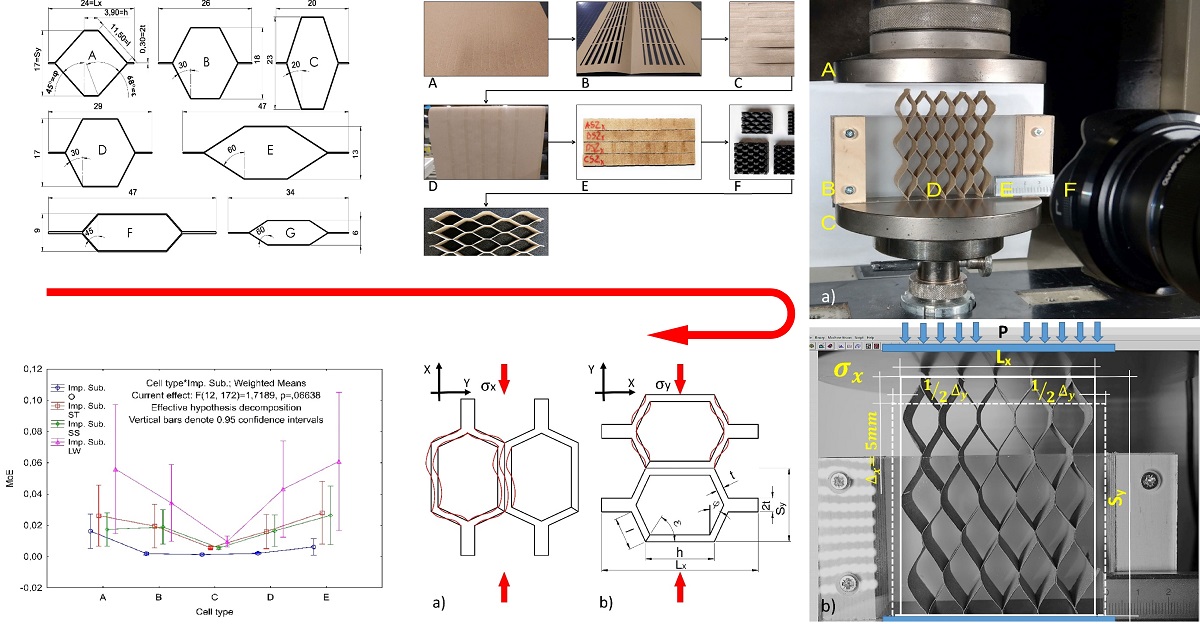The research hypothesis states that the impregnation of the honeycomb paper core of lightweight sandwich panels with modified starch, sodium silicate and LiquidWood® resin has a significant effect on the elastic properties of it. In the study, a recycled paper was used in three thicknesses, seven types of cell shapes, including two after numerical optimization and three types of impregnating agents. The method of digital image analysis determined the elastic constants of manufactured paper cores, which were subjected to axial compression in two directions. Based on the experimental results, elastic constants of the cores were calculated and compared with the results of numerical calculations. It has been shown that each of the impregnating solutions used improves the stiffness of the paper core. The best results were obtained for LiquidWood® epoxy resin and modified starch. An important parameter of cell geometry affecting their rigidity is the angle of the cell wall φ, as well as the arrangement of the common cell wall in relation to the direction of load. The numerical models developed were positively verified.

